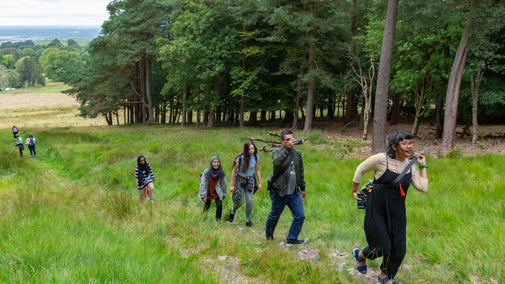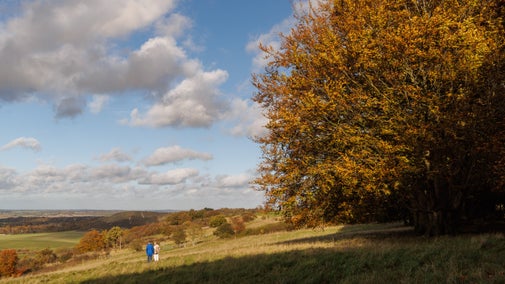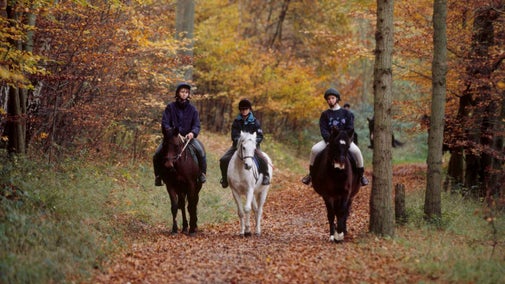Duncombe Terrace walk
Essex, Bedfordshire & Hertfordshire
Enjoy a gentle walk along the popular Duncombe Terrace, taking in the historic Bridgewater Monument, as well as Ashridge Woods with its ancient trees and varied wildlife.
Near to
Ashridge EstateStart point
Ashridge Estate visitor centre. Grid ref: SP970130Trail information
*This is a level trail that shouldn't pose any problems. For further details, please see Terrain section.
**This route is suitable for people with reduced mobility. For further details, please see section marked Access.
***Dogs are welcome, with conditions. For further details, please see section marked Facilities.
A walk for all seasons
The Ashridge Estate has plenty to see all year round. The bluebell displays in spring are superb, and you can find lots of grassland flowers, such as orchids, in summer. Autumn is a great time to come and watch the deer rut, while winter brings a sense of magic and wonder to this corner of Hertfordshire.
More near here
In the footsteps of Capability Brown
Discover the Golden Valley, a hidden gem of the Ashridge Estate, on this 4.3-mile walk. Designed by the famous 'Capability' Brown this masterpiece ranks among his finest works.

Get in touch
Moneybury Hill, Ringshall, Near Berkhamsted, Hertfordshire, HP4 1LT
Our partners

We’ve partnered with Cotswold Outdoor to help everyone make the most of their time outdoors in the places we care for.
You might also be interested in
Walking
Explore some of the finest landscapes in our care on coastal paths, accessible trails, woodland walks and everything in between. Find the best places to walk near you.

Walking in Essex, Bedfordshire and Hertfordshire
From long forest wanders to a gentle amble to a famous literary hut, these are some of the best walks around Essex, Bedfordshire and Hertfordshire.

Cotswold Outdoor: our exclusive walking partner
Learn about the National Trust’s ongoing partnership with Cotswold Outdoor. Find out how they help us care for precious places and the exclusive discount available for National Trust supporters.

Follow the Countryside Code
Help to look after National Trust places by observing a few simple guidelines during your visit and following the Countryside Code.

Staying safe at National Trust places
The special places in National Trust care sometimes come with a few risks for visitors, be it coastline or countryside. Find out how to keep safe throughout your visits.

Outdoor activities at Ashridge Estate
Ashridge has over 80 miles of pathways to explore, on foot, on bike and on horseback.

Deer at Ashridge Estate
The fallow deer are an integral part of the landscape at Ashridge and a much-loved feature of this historic estate. Find out about their history here and how we manage them.

Things to see and do at Ashridge Estate
Ashridge has over 80 miles of pathways 5,000 acres of woodland, from the windmill to Bridgewater Monument and panoramic views of the estate, there’s lots to explore at Ashridge Estate.

